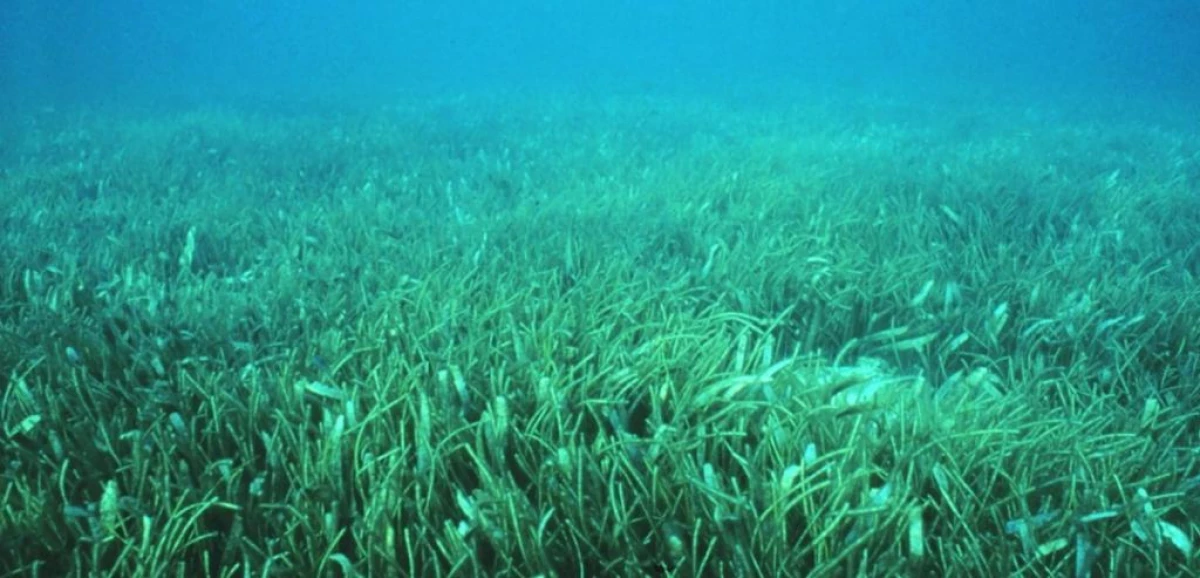Conservation of seagrass, lifeline for fish survival

You must have seen grass in the sea, but you probably didn't
know it is the main breeding site for fish, especially Rabbitfish. Although they are weak, this grass also has the strength to neutralize sea hurricanes.
Seagrass is commonly found in shallow waters, making them a good breeding ground for fish. They provide an environment for small fish to live until maturity.
Dickson Juma, the director of Kuruwitu Marine Conversation Group based in Kilifi, says it is these numerous benefits of seagrass they began an initiative to encourage communities in the Coastal region to plant and preserve this grass.
Juma says they started this initiative in 2003 on different sea fronts where they conserve the grass alongside other sea features such as coral reefs and sea sand.
The group has set aside three hectares of different sea areas for planting sea grass that provides a safe place for fish to lay and hatch eggs.
“We have conversation centers in Mwanamia, Jangwani, Kuruwitu, Kinuni, Vipingo and Bureni where we conserve seas grass alongside various fish species found in shallow waters,” Dickson said.
“The objective of setting aside these areas is to provide areas for fish breeding and allowing small fish to grow to maturity,” he added.
Juma says the ideal place for setting up these projects is where seat turtles are common. He notes that fishermen are not allowed to fish or park their boats in the areas set aside for seagrass conservation.
Daniel Maina, the chairman of Kisiwani Network Environmental Conservation Group, says that seagrass is not only conserved for providing breeding areas for fish but also as a way of preventing sea pollution.
“Human activities and industrial wastes are negatively impacting the lives in the sea. The first place these pollutions affect is the fish breeding sites,” Maina said.
Maina further notes that the seagrasses also act as hiding areas for fish running away from predators. He says the grasses clean the air the fish breathe in the sea and prevent strong sea waves.
Different species of fish and marine animals also depend on seagrass for food. Coral reefs also thrive well where there is sea grass.
In Kenya, 13 types of seagrass grow in marshes, sand and muddy estuaries. Though the grass can thrive in various conditions, it cannot survive when it comes in contact with non-sea water.
“Salty water is the habitat of seagrass; therefore, this grass cannot sustain contamination with other water. Seagrasses will die and never grow again in an area where waste waters are disposed of,” Maina said.
Arthur Tudor, former head of marine reserves, said all areas used for the conservation of grass are supported and protected by the government.
“The government is protecting the marine conservation to protect the sea ecosystem and marine life. The conservation projects are also a source of income for the government since they also act as tourist sites,” said Tudor.
Dickson says these conservation centers also act as research centers. He says they have received fishermen from various countries including Tanzania, Djibouti, and Mozambique, who have toured grasslands conservation projects for research.
The conservation of this grass has, however, gotten some challenges along the way that include climate change, rise in sea temperature, pollution from industries and human activities.
Want to send us a story? SMS to 25170 or WhatsApp 0743570000 or Submit on Citizen Digital or email wananchi@royalmedia.co.ke
Comments
No comments yet.


Leave a Comment